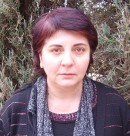
Plenary Lecture
Emphasis on Sustainability Concepts for Analyzing the Disconnection Process Energy Transformation in the Generator Circuit-Breaker

Associate Professor Cornelia Aida Bulucea
Faculty of Electrical Engineering
University of Craiova
ROMANIA
E-mail: abulucea@gmail.com
Abstract: The sustainability concepts of science describe aspects of the universe. A convincing example of the usefulness of exergy and embodied energy for analyzing systems which transform energy is the generator circuit-breaker (GCB) disconnection process. Nowadays, the electric connection circuits of power plants, based on fossil fuels as well as renewable sources, entail GCBs at the generator terminals, since the presence of that electric equipment offers many advantages related to the sustainability of a power plant. A generator circuit-breaker is located between the generator and the main step-up transformer, this location influencing the operating conditions of GCBs. The interruption requirements of a GCB are significantly higher than for the distribution network circuit-breakers. A generator circuit-breaker must be capable of interrupting not only the high symmetrical fault current, but also the higher asymmetrical faults currents resulting from high aperiodic pulsating components of the fault current. This way arises a sustainability requirement for generator circuit-breakers which are subjected to a unique demanding condition, called delayed current zeros. The manner in which the various factors influence the delay lasting of the first zero passing of the short-circuit current are investigated. Further in this study it is emphasized that although the phenomena produced in the electric arc at the terminals of the circuit-breaker are complicated and not completely explained, the concept of exergy is useful in understanding the physical phenomena. Investigations of electrics show that the limits between the microscopic and macroscopic phenomena are fragile and certain phenomena could be studied in related frames of work. The electric arc that occurs during the interruption processes in a circuit-breaker can be studied as a very high temperature (up to 50,000 K) continuous plasma discharge, and thermodynamic parameters must be taken into consideration; alternatively it could be seen as an electric conductor of a resistance depending on the current intensity (under a constant low voltage) and studied within the Faraday’s macroscopic theory. Electric arc interruption is of great importance, because an uncontrolled electrical arc in the apparatus could become destructive since, once initiated, an arc will draw more and more current from a fixed voltage supply until the apparatus is destroyed. However, the appearance of an electric arc at the terminals of the circuit-breaker should not be necessarily seen as a damaging phenomenon since if the electric arc would not appear the network embedded magnetic energy would be converted to the energy of the circuit electric field, leading further to high over-voltages in the network. Moreover, due to the arc exergy, the aperiodic pulsating component of the short-circuit current decreases very quickly, starting with the moment of contact separation.
Brief Biography of the Speaker: Cornelia Aida Bulucea is currently an Associate Professor in Electrotechnics, Electrical Machines and Environmental Electric Equipment in the Faculty of Electrical Engineering, University of Craiova, Romania. She is graduate from the Faculty of Electrical Engineering Craiova and she received the Ph.D degree from Bucharest Polytechnic Institute. In Publishing House she is author of four books in electrical engineering area. Research work is focused on improved solutions for electrical networks on basis of new electric equipment, and environmental impact assessment of electric transportation systems. She has extensive experience in both experimental and theoretical research work, certified by over 70 journal and conference research papers and 15 research projects from industry. She has held in the Association for Environment Protection OLTENIA and she is a regular invited keynote lecture for environmental engineering symposia organized by Chamber of Industry and Commerce OLTENIA. Due to WSEAS recognition as huge scientific Forum she participated over time in nineteen WSEAS International Conferences, presenting papers and chairing sessions. She was Plenary Lecturer in the 5th IASME/WSEAS International Conference on ENERGY&ENVIRONMENT (EE’10), held by the University of Cambridge, UK, February 23-25, 2010, in the 4th IASME/WSEAS International Conference on ENERGY&ENVIRONMENT (EE’09), ), held by the University of Cambridge, Cambridge UK, February 24-26, 2009 and in the 8th WSEAS International Conference on POWER SYSTEMS (PS’08), held by the University of Cantabria, Santander, Spain, September 23-25, 2008. She is very proud by her over 30 papers published in the WSEAS Conferences Books and journals.